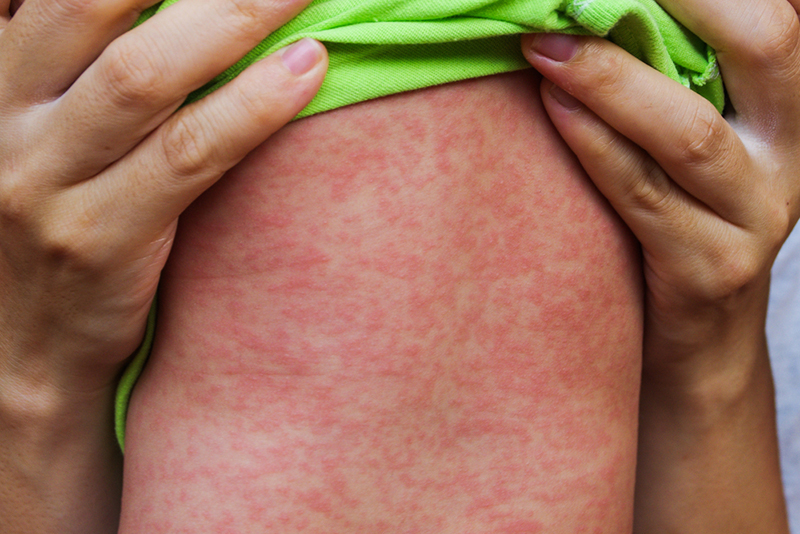You may think measles is a disease of the past, but in fact there have already been at least 35 cases of measles confirmed in Australia in 2017, including seven cases in Queensland.
According to Queensland Health’s most recent communicable diseases update, one Gold Coast resident had acquired their infection in Japan, another person with a confirmed case had recently travelled to India and five other Queenslanders had travelled to Bali, Indonesia.
In 2017, there have been:
- 12 reported measles cases in Western Australia
- 11 in New South Wales
- 7 in Queensland
- 4 in Victoria
- 1 in the Northern Territory.
One of the largest measles outbreak was in Sydney, where at least ten cases have been confirmed. This prompted NSW Health to issue a warning of a measles outbreak. There were also fears there would be an outbreak in Queensland after an adult tested positive to the virus in Brisbane.
Quest Community Newspapers reported that a patient had attended a concert at the RNA Showgrounds and the Ice World ice skating rink at Acacia Ridge before they were admitted to hospital, meaning there was a risk of further infection to people who came into contact with them.
Experts are urging people to get vaccinated to protect themselves and their family from the disease, especially people with young children.
Doctor Vicky Sheppeard told AAP recent cases reinforce the importance of getting vaccinated.
“A highly effective measles vaccine has been freely available for many years and it is vital for everyone, including adults and children, to have two doses of the measles vaccine during their lifetime,” she said.
What are the symptoms of measles?
Measles is a highly contagious and serious airborne virus that lives in the mucus of the nose and throat. It spreads easily through the air when an infected person breathes, coughs or sneezes.
Before vaccination was made widely available in 1980, measles caused an estimated 2.6 million deaths across the globe every year.
According to Australia’s federal Health Department, symptoms of measles can take between 10 and 14 days to show up after an infection.
They include:
- Blotchy red rash
- Fever
- Coughing
- Runny nose
- Inflamed red eyes.
The measles rash usually begins on the face and neck and spreads over the body and disappears after about six days.
Patients usually feel very unwell and have a high fever.
“If you develop the symptoms of measles, seek medical advice,” Dr Sheppeard said.
“Please call ahead to your doctor or emergency department so that arrangements can be made to keep you away from others to minimise the risk of infection.”
If you’re usual
Thought measles had been eliminated in Australia?
You’re right, it was.
On March 20, 2014, the World Health Organization (WHO) announced that measles elimination had been achieved by Australia and a number of other countries.
However, this doesn’t mean measles cannot ever be contracted in Australia.
It simply means the WHO has verified that Australia has no local strains of measles circulating in the community. Australia also has good surveillance systems in place to quickly detect and respond to measles cases.
The disease can still be imported by travellers returning from countries where measles is prevalent.
Because the disease is highly contagious, this can lead to a localised measles outbreak among people who aren’t immune.
That is why vaccination is so important
To maintain Australia’s ‘elimination status’, we need to continue vaccinating people against measles.
If there is a high level of immunity within the community, it makes everybody safer.
All children should receive two doses of measles vaccine, once at 18 months and again at 12 years old.
The vaccines are funded under Australia’s National Immunisation Program.
The vaccination is just as important for adults as well. House Call Doctor wrote a blog on: The kids are covered, but have the adults in your household had their flu shots?





